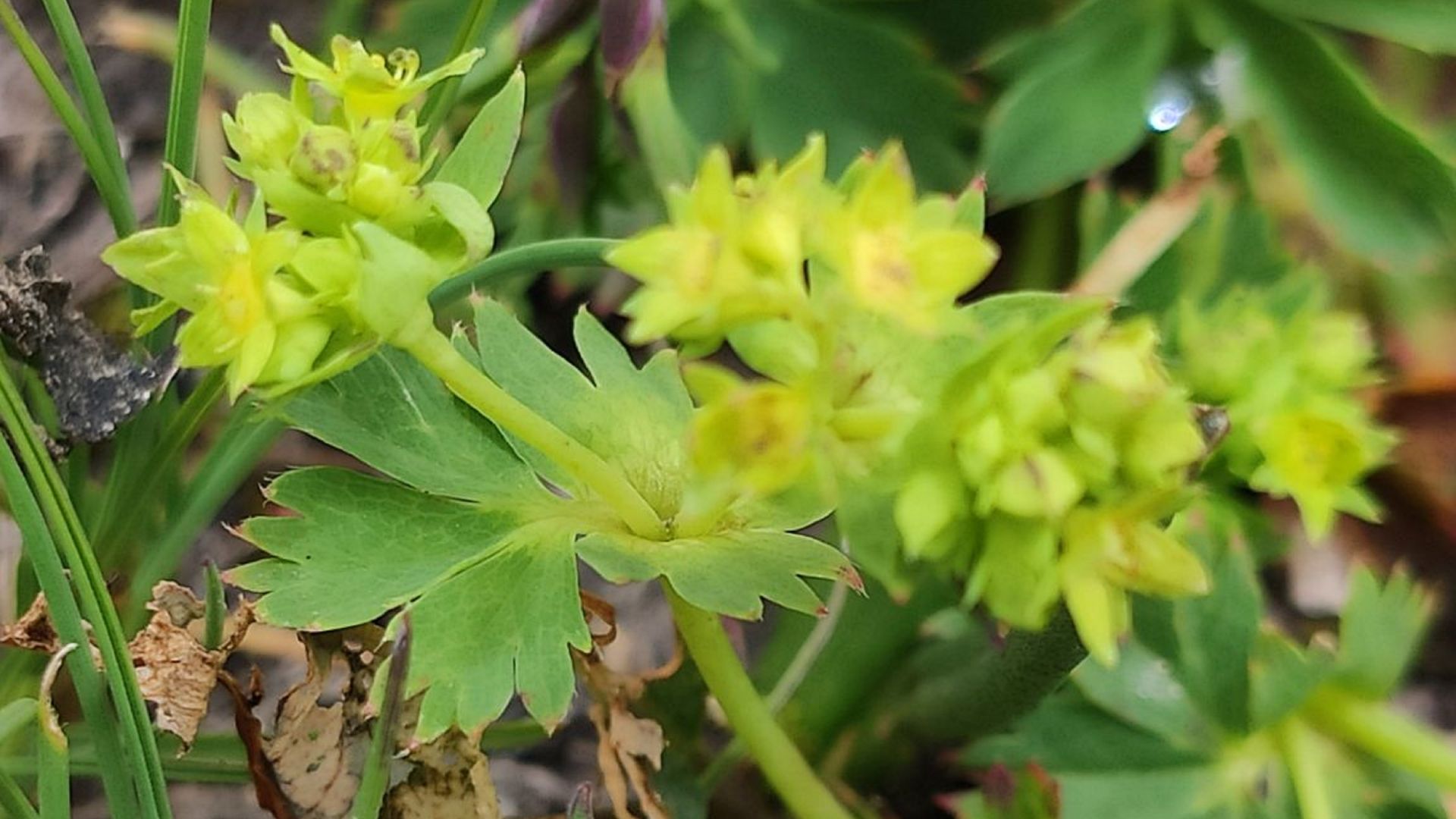Nidergestreckter Frauenmantel
Alchemilla demissa aggr.
With its small, yellow-green flowers, the Prostrate Lady’s Mantle is a rather unremarkable species. It is hard to believe that it is related to roses, strawberries and plum trees. In fact, it is a member of the rose family. The genus takes its name from the alchemists who believed that the sparkling drops on its leaves could be used to create the Philosopher’s Stone, a substance that would turn everything into gold.
The Alchemilla genus is very diverse in the Alps and only a few specialists can identify each species with certainty. The Prostrate Lady’s Mantle usually grows low to the ground and seldom grows over 5 cm high. The 7–9 lobed leaves are usually hairless on the top and have the characteristic “lady’s mantle shape”.
Facts and Figures
The name lady’s mantle comes from traditional herbal medicine. In the past, different types of lady’s mantle were prescribed to treat women’s ailments. The dried leaves of lady’s mantle were also used to relieve stomach ailments and diarrhoea. Many Alpine herbal teas still contain dried leaves of different species of this genus, even if it is disputed how effective they actually are.
Territory
Der Niedergestreckte Frauenmantel mag etwas feuchtere Böden und ist oft an Quellen oder The Prostrate Lady’s Mantle likes slightly damper soils and is often found growing near to springs or in small snowy valleys where snow lingers for a long time during the spring. These locations are therefore usually a little damper and nutrient-rich. The exact distribution of this species is unknown in Switzerland because there are too few people who can identify Alchemilla demissa with absolute certainty. more information



